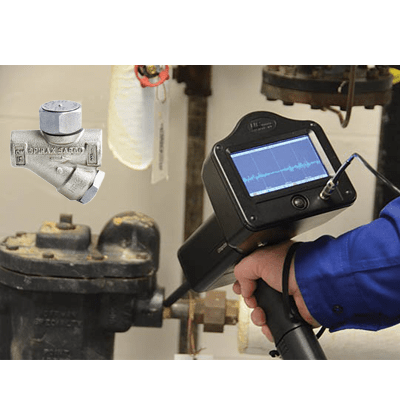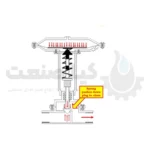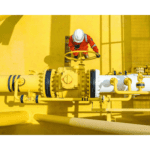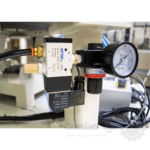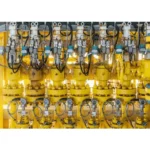Industrial facility owners and operators understand the high costs associated with steam trap failure.
An often overlooked component helps reduce fuel waste and production costs while improving overall system efficiency.
Therefore, it is important to invest in quality steam traps and ensure regular maintenance to extend their life.
This article examines the common causes of steam trap failure with practical solutions to reduce unexpected damage.
What are the effects of steam trap failure?
Steam traps filter condensate (condensed steam) and non-condensable gases such as air while preventing steam from escaping.
They control energy loss, increase productivity and efficiency, and keep the steam system active.
Common reasons for failure of steam traps
Here are eight reasons steam traps fail:
exhaustion
Steam traps, like other equipment, have a certain lifespan.
They break down over time, even when not in use. However, there are several ways to extend the life of steam traps.
Quality steam traps may cost more, but they have long-term benefits. They reduce downtime and maintenance costs, which saves money on steam lines.
Obstruction
Steam traps perform optimally based on their ability to allow adequate steam flow.
However, there are cases where debris can cause them to break or fail.
Obstructions affect the flow of condensate by blocking the orifice or the strainer plate.
One solution to prevent steam trap blockage is regular cleaning and maintenance of the equipment.
Wrong installation
Proper installation of a steam trap can significantly increase its operational life, and it is essential to follow the recommended guidelines.
For example, while some steam traps have built-in strainers, others require separate strainers to be installed.
These parts prevent rust and debris from entering the internal system to cause damage.
Another suitable installation example for thermodynamic steam trap belts is the installation of insulating caps to prevent rusting when used in very cold weather.
Using this solution can save the disc and seat from rapid wear.
Steam trap water pollution
Water quality plays a vital role in the life of the steam trap.
For example, feeding water with dissolved gases such as carbon dioxide or oxygen can cause corrosion.
The presence of oxygen leads to the formation of cavities.
On the other hand, carbon dioxide dissolved in the condensate creates carbonic acid and makes the condensate acidic.
Proper water treatment can prevent its transmission and reduce the risk of steam trap failure.
Condensate contamination
Condensate contamination can be caused by multiple use of electrical appliances, boiler transfer or heat exchanger leakage.
This causes the potential of hydrogen (pH) to decrease and the condensate to become acidic.
Acidic condensates, in turn, corrode the inside of the steam belts and cause them to fail.
A boiler water management system, including condensate testing, can help identify the source of contamination.
Improper use of steam trap
Flow traps are a small part of the overall system but should never be overlooked. There are different types for different applications, including:
Thermodynamic steam trap
Thermostatic steam trap
Mechanical steam trap
Installing the correct type can improve performance and extend the service life of the part.
Similarly, the use of steam traps according to their specifications leads to proper drainage.
As a pro tip, performing regular system inspections and monitoring for early detection of malfunctions is very effective in improving steam trap performance.
Additionally, ensure that the condensate return system is operating at the proper temperature and pressure.
Poor maintenance
As with any other component, thorough and regular maintenance is critical to minimizing steam trap failure.
Although with plant managers, it is recommended to create a separate maintenance calendar for steam traps and follow it strictly.
This functionality helps reduce unexpected failures and replacement costs, given that failure can affect other parts of the system.
increase pressure
The increase in pressure is caused by factors such as improper piping, sudden opening of the valve, and improper functioning of the steam trap.
This results in a water hammer effect that can damage the internal steam trap and other components.
It is necessary to regularly inspect the system and use it according to the required capacity.
How to prevent steam trap failure?
Here are 8 ways to prevent unexpected steam trap failure:
1-Check the system to identify system design flaws.
2- Check unused systems and existing equipment and remove broken ones.
3- Check and inspect the steam trap regularly.
4- Make insulation inspections a priority because condensation can build up in areas with poor insulation.
5- Use an ultrasonic leak detector or hand-held IR temperature analyzer to test control or turn off valves, especially in HVAC systems.
6- Use ultrasonic diagnostic equipment to check the bypass valves in the steam system.
7- Turn off seasonal equipment such as unit heaters.
8- Use a computer system to analyze and manage processes if possible.
Frequently asked questions about steam trap failure
In the following, we will examine the most common questions related to the failure of the steam trap:
Why do steam traps fail every once in a while?
The lifespan of a steam trap depends on various factors such as quality, use and maintenance.
Regular and planned preventive maintenance can significantly reduce breakdowns.
Just like the correct usage. However, investing in quality steam traps is definitely the best solution, especially in heavy duty applications.
Can the steam trap be repaired?
Broken steam traps can sometimes be repaired, but if there is significant damage, it’s best to replace them.
Repairs can be affordable but must be done carefully. For example, if the body is still in good condition while only the internal parts are damaged, a repair can be the ideal solution.
When in doubt, it’s best to call a professional.
Our experts can guide you in buying a steam trap and repairing a steam trap.
How do you recognize a bad steam trap?
There are many ways to identify a faulty steam trap. A simple technique is to visually inspect them for damage such as leaking gaskets or broken connections.
Vapor traps may also be tested by sound and temperature and in some cases by thermography for proper diagnosis.
Kiasanat is a supplier of high quality steam traps with competitive prices.
Steam traps in power plants: types and performance
Necessary measures to install a steam trap

